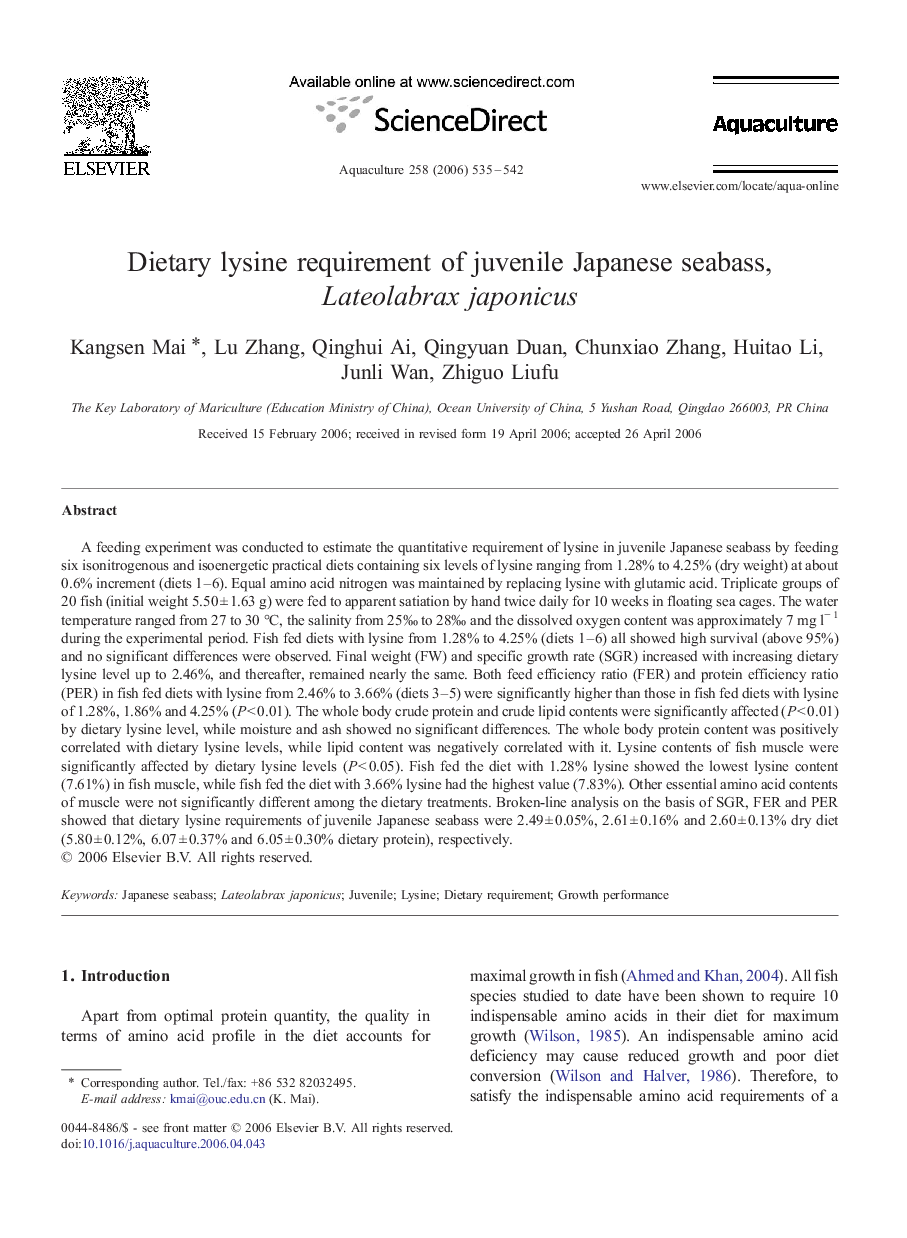| Article ID | Journal | Published Year | Pages | File Type |
|---|---|---|---|---|
| 2425870 | Aquaculture | 2006 | 8 Pages |
A feeding experiment was conducted to estimate the quantitative requirement of lysine in juvenile Japanese seabass by feeding six isonitrogenous and isoenergetic practical diets containing six levels of lysine ranging from 1.28% to 4.25% (dry weight) at about 0.6% increment (diets 1–6). Equal amino acid nitrogen was maintained by replacing lysine with glutamic acid. Triplicate groups of 20 fish (initial weight 5.50 ± 1.63 g) were fed to apparent satiation by hand twice daily for 10 weeks in floating sea cages. The water temperature ranged from 27 to 30 °C, the salinity from 25‰ to 28‰ and the dissolved oxygen content was approximately 7 mg l− 1 during the experimental period. Fish fed diets with lysine from 1.28% to 4.25% (diets 1–6) all showed high survival (above 95%) and no significant differences were observed. Final weight (FW) and specific growth rate (SGR) increased with increasing dietary lysine level up to 2.46%, and thereafter, remained nearly the same. Both feed efficiency ratio (FER) and protein efficiency ratio (PER) in fish fed diets with lysine from 2.46% to 3.66% (diets 3–5) were significantly higher than those in fish fed diets with lysine of 1.28%, 1.86% and 4.25% (P < 0.01). The whole body crude protein and crude lipid contents were significantly affected (P < 0.01) by dietary lysine level, while moisture and ash showed no significant differences. The whole body protein content was positively correlated with dietary lysine levels, while lipid content was negatively correlated with it. Lysine contents of fish muscle were significantly affected by dietary lysine levels (P < 0.05). Fish fed the diet with 1.28% lysine showed the lowest lysine content (7.61%) in fish muscle, while fish fed the diet with 3.66% lysine had the highest value (7.83%). Other essential amino acid contents of muscle were not significantly different among the dietary treatments. Broken-line analysis on the basis of SGR, FER and PER showed that dietary lysine requirements of juvenile Japanese seabass were 2.49 ± 0.05%, 2.61 ± 0.16% and 2.60 ± 0.13% dry diet (5.80 ± 0.12%, 6.07 ± 0.37% and 6.05 ± 0.30% dietary protein), respectively.
